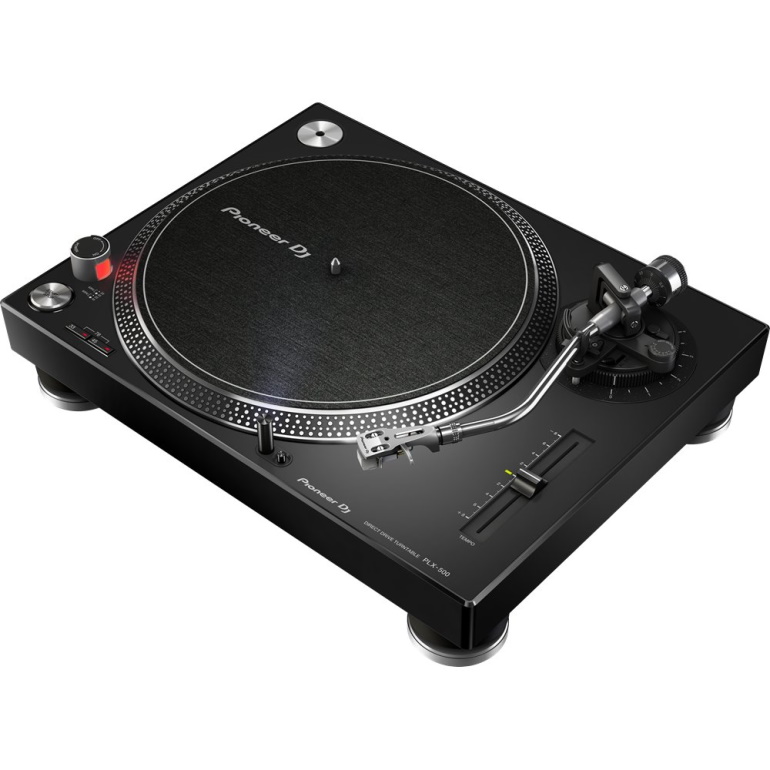Pioneer PLX-500 Review
After the triumphal march of the PLX-1000, Pioneer sends the similar directly driven PLX-500 into the race for space next to the mixer. In terms of its specifications, it lags a bit behind the top model, also slightly different in the dimensions and pitch range. It has a 44.1 kHz USB sound card in its chassis – interface to connect with the computer in order to digitize vinyl without an additional audio interface. This sometimes takes a lot of weight when making a purchase decision and the professional demeanor improves. Is this a good turntable for DJs and audio digitizing or not? We will answer this in our Pioneer PLX-500 Review article below.
Disclaimer: If you purchase through links on our site, we may earn an affiliate commission. Read More
Pioneer has several great turntables, such as the “tangential” PL-L1. In the basic Hi-Fi department it offers two, not the latest models, PL-30 and PL-990. But in the DJ section, we will find two more – PLX-500 and PLX-1000; both loosely refer to the Technics SL-1200 form, which inspires many manufacturers. Belonging to the DJ category may be discouraging, but it is the aftermath of the situation from a few years ago when the turntable did not fascinate audiophiles but remained in the area of interest of the DJ industry. PLX-500 is large, the housing has a width of 45 cm. A characteristic feature of all SL-1200 “clones” is the platter and the large ring for adjusting the base of the arm. In this price range, direct drive is something unique. What is important for quick disassembly of the platter from its resting position, as well as stabilization of rotation – the electronic system with sensors is responsible for it; the electronic brake stops rotation when the Stop button is pressed.
- Excellent sound design, just like the PLX-1000 the PLX-500 is built to...
- Easy digital recording by connecting the turntable to your PC or MAC via...
- Use the PLX-500 to mix and scratch your vinyl record or combine the...
- Cover Art Display - Put your record covers on display while listening to...
Build Quality
Platter and Tone Arm
The aluminum platter looks impressive due to the “centered” outer flange, which is part of the classic strobe rotation control system.
Observing the platter was a necessity when manually adjusting the revs, here everything is responsible for electronics, accurately setting 33, 45, and even 78 rpm (buttons), in addition, revolutions can be changed in the range +/- 8% (using the slider) – it is a gadget for the DJs or an opportunity for innocent fun …
You can, for example, listen to Beatles ‘She Loves You’ at “natural” speed (on official releases, apart from some Japanese releases, the song is accelerated by several percent, of course consciously, by George Martin’s decision from 1963).
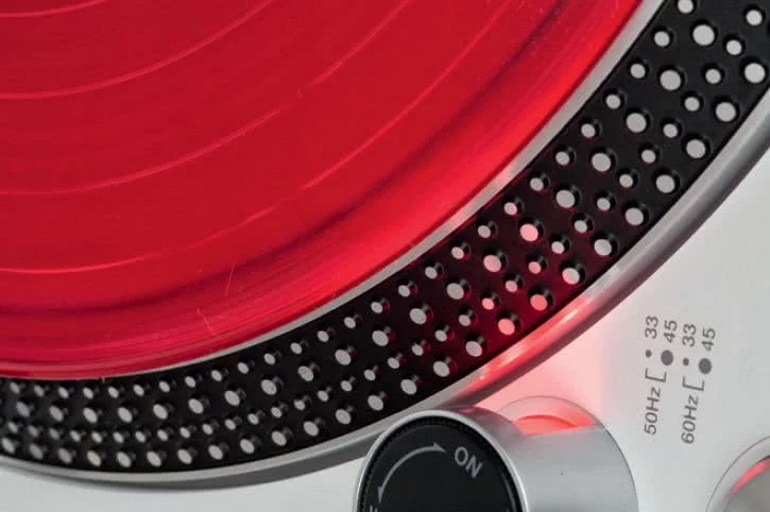
The characteristically beveled, patterned platter edge, and strobe speed control system resembles the famous SL-1200. The tonearm belongs to the 9-inch category, and it is S-shaped. The head is tightened (the possibility of its replacement increases the turntable’s tolerance field for various types of inserts). The design of the column and the gimbal suspension system, with a large frame and bearing arrangement, also refers to the SL-1200 scheme.
The column base is equipped with a large ring with which (after releasing the latch) we can conveniently adjust its height. This is one of the best solutions of this type and quite unique in this price range (it is not easy to find VTA regulations here at all).
The classic, rotating counterweight is already used to adjust the needle pressure, and a convenient scale knob is provided for anti-skating.
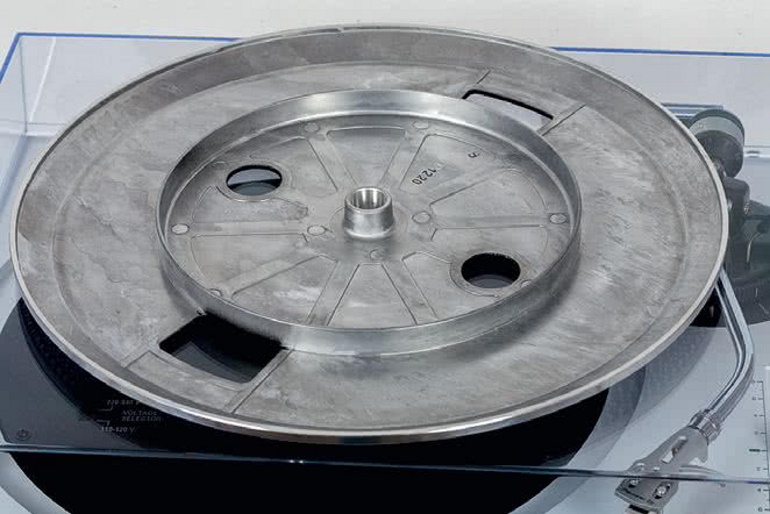
Cartridge
This turntable has a correction preamplifier installed for MM cartridges, as well as a simple analog-to-digital converter (16 bit/48 kHz) and a USB output (thanks to which we can transfer music from record to the computer). The turntable is delivered with the MM cartridge installed and calibrated, it has no markings on it, and in the company materials, I only found a mention that Pioneer offers (under its name) new needles. I suspect based on the appearance that this is some variation of the Audio-Technica AT3600L model, prepared especially for Pioneer.
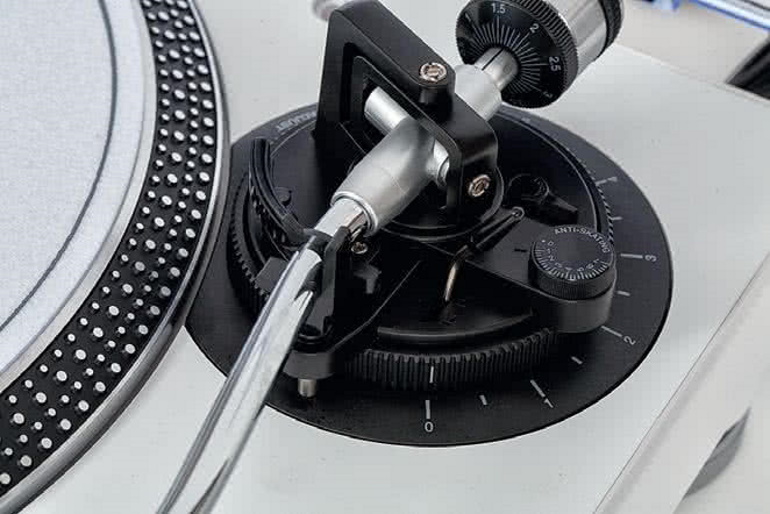
- Excellent sound design, just like the PLX-1000 the PLX-500 is built to...
- Easy digital recording by connecting the turntable to your PC or MAC via...
- Use the PLX-500 to mix and scratch your vinyl record or combine the...
- Cover Art Display - Put your record covers on display while listening to...
Sound Test
In a direct A/B comparison to the Technics SL-1210 M5G and at the maximum level on the mixer, the PLX-500 phono signal hums slightly, with the line output noise can be heard. However, I do not hear this hum and noise at a normal volume, so they are not included in the evaluation. When playing conventional vinyl, I notice a very light, dark coloring of the sound image on the PLX-500. With the same mounted pickup, the Technics SL-1210M5G plays a touch more brilliant and transparent. From the output level, both turntables drive the same high level.
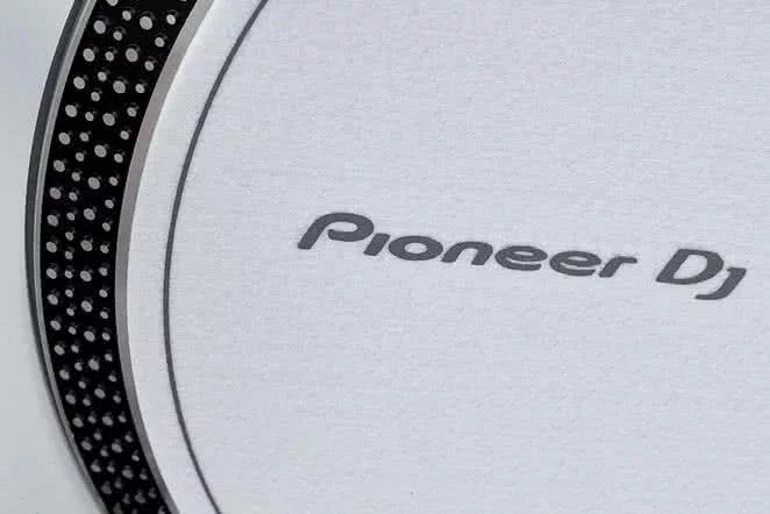
The difference between all music genres will be evident. By withdrawing the treble, the midrange comes to the front, the vocals are dense and “present”. All you need is a different phono preamplifier to get more detail, rhythm and breath, not only by better opening the top of the band, but also thanks to a more “specific”, concise bass sound. It is still quite soft, avoiding strong and sharp accents. All in all, the PLX-500 convinces with a very good sound, but the cartridge provided by Pioneer sounds much duller than an “Ortofon Pro” entry system mounted on the SL-1210 M5G. Therefore, I recommend using a different system for digitizing.
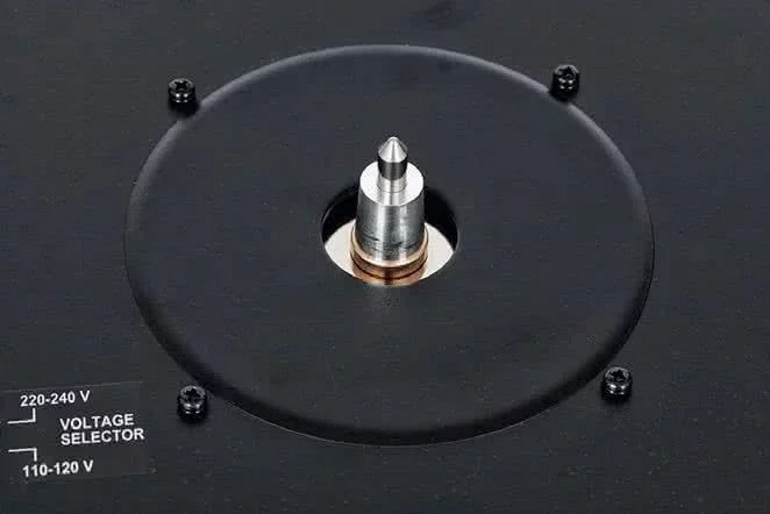
Verdict
With the directly driven PLX-500, Pioneer has an attractively priced turntable in its range. Its torque, synchronism, and robust chassis with solidly anchored platter provide the basis for professional application and scratching with vinyl. The sound has largely convinced me. Another argument for the PLX-500 is its integrated sound card, which sends the signal to a connected computer without additional hardware. Vinyl lovers can thus digitize their record treasures via record box. DVS operation with a record box, even an app on the iPad, is possible without additional “dongle” hardware. For me, the PLX-500 is a great turntable in its price range.
The user manual is here: Pioneer PLX-500 User Manual
√ Check The Price and Read Customer Reviews √
Pros
- Solid Workmanship
- Robust Housing and Weight
- Good Vibration Damping
- Integrated Sound Card For Digitizing And For DVS
- Very Good and Loud Sound
- Cover And Cartridge as Accessories
- Price
Cons
- Tonearm Drifts Outwards
Specifications
Main Features
What’s in the box
- Slipmat
- Dust cover with jacket stand
- Adapter for 45 EP records
- Headshell (with cartridge)
- Balance and shell weights
- Audio conversion cord:
- 1 Stereo pin plug (female)
- 1 Stereo mini-plug (male)
- USB cord
Dimensions
- Width: 450 mm
- Height: 159 mm
- Depth: 368 mm
- Weight: 10.7 kg
Turntable
- Drive Method: Servo-type direct drive
- Platter: Aluminium, die-casting diameter: 332 mm
- Motor: 3-phase, brushless DC motor
- Braking System: Electronic brake
- Rotation Speed: 33⅓, 45, 78 rpm
- Rotation Adjustment Range: ±8 %
- Wow and Flutter: < 0.15% WRMS
- Signal-to-Noise Ratio: 50 dB
- Starting Torque: > 1.6 kgf・cm
- Start Time: Within 1 sec (at 33⅓ rpm)
Tone Arm
- Arm Type: Universal type S-shape tone arm, Gimbal-supported type bearing structure, Static balance type
- Overhang: 16 mm
- Effective Length: 230.5 mm
- Tracking Error: Within 3°
- Height Adjustment Range: 6 mm
- Stylus Pressure Variable Range: 0-4 g (1 scale 0.1 g)
- Proper Cartridge Weight: < 9.5 g
- Cartridge type: VM
- Terminals: USB, 1 USB B port
- Outputs: 1 PHONO/LINE (RCA)

